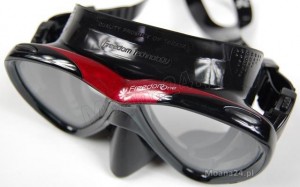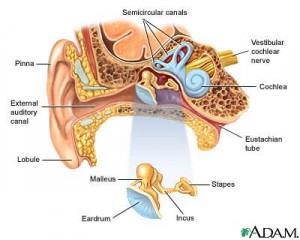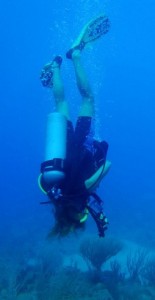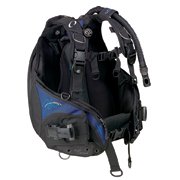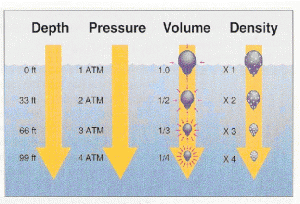What’s the most important rule in diving? Never hold your breath! If you remember one thing from your dive course, that’s usually it; but do divers really know why it’s so important?
This is the final post in a series on air and its relationship to 5 key areas in diving that I’ve been writing about. If you haven’t already done so, take a peek at the introduction for some important background notes to ensure you understand the basics about air and pressure. These are directly related to what we’ll be talking about here and I encourage you to explore any of the other topics as well to expand your diving knowledge!
Understanding Air and its Relationship to 5 Key Areas in Scuba Diving
Part 1 – BCD Air Inflation/Deflation and Buoyancy: A Balancing Act!
Part 2 – Equalizing Your Ears: Let’s Get Popping!
Part 3 – Equalizing Your Mask: Don’t Squeeze Me!
Part 4 – From Tank to Breath of Fresh Air: The Journey!
What happens if I hold my breath while scuba diving?
Do you remember when I talked about how the air inside your BCD will expand as you swim up, even just a metre or a few feet? And the need to let some air escape to maintain your position?
What would happen if you didn’t let that air escape?
Well, you would continue to float upwards and the air would continue to expand and cause you to float up faster and faster – a potentially very dangerous situation because divers need to ascend slowly from every dive (no faster than 18m or 60ft/minute).
Just like your BCD, your lungs have air inside and if you don’t let the air escape as you ascend (even just a metre or a few feet) you can do some serious, if not fatal damage to your lungs and body. Considering that, let’s get back to that #1 rule in diving again – Never hold your breath and always keep breathing! If you do hold your breath and you ascend, the air in your lungs will expand and keep expanding until any of these life threatening possibilities might happen:
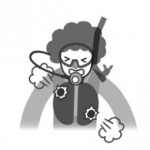 1. Lung over expansion injury where your lungs over stretch from the expanding air that is forced into the chest cavity, otherwise known as pneumothorax (collapsed lung).
1. Lung over expansion injury where your lungs over stretch from the expanding air that is forced into the chest cavity, otherwise known as pneumothorax (collapsed lung).
2. Lung over expansion injury where your lungs over stretch from the expanding air that is forced into the space between the lungs and around the heart, otherwise known as mediastinal emphysema.
3. Lung over expansion injury where your lungs over stretch from the expanding air that is forced under the skin, otherwise known as subcutaneous emphysema. I saw this once when a teen was goofing around on his safety stop and the surge brought him up while he held his breath. The sound of his voice sounded strange and he told us what he had done. We gave him oxygen and he stayed in the hospital for observation for a day or two, but was okay.
4. The most dangerous of all, Arterial Gas Embolism where the expanding air pushes its way through the tissues of the lungs and into the blood stream where it could cause a blockage to your brain or elsewhere.
To learn more about these and other news and research in diving, check out the DAN website and these articles I referred to when writing this:
Decompression Illness: What is it and What is the Treatment
Mechanism of Injury for Pulmonary Over-Inflation Syndrome
So, if you are ever in an out of air situation and you need to get to the surface in order to breathe (and your buddy is nowhere to be found or also out of air), remember to swim no faster than 1ft/second and look up while making an “ahhh” or humming sound with the regulator still in your mouth. The air that is in your lungs will expand as you go to the surface but will be able to escape as you swim up.
Breathing and Buoyancy
Ensuring that you are always breathing during scuba diving not only protects you from fatal injuries, it also allows you to enjoy a more comfortable dive. Let me explain how your lungs and breathing contribute to buoyancy in scuba diving…
At first thought, it may be difficult to imagine your lungs like a big internal balloon that gets bigger as air goes in (inhale) and smaller as air goes out (exhale), most likely because we don’t actually think about the act of breathing as it happens. However, the image of a balloon is a perfect example of what our lungs are like. Just like a balloon, when it is inflated, the balloon floats and when it contains very little air, it sinks – just like our bodies in diving!
Maybe you’ll remember a time when you were VERY excited about a dive…or maybe even a bit nervous and no matter what you tried to do, you could not descend at the beginning of your dive. You probably didn’t realize it, but you were most likely breathing very quickly with short breaths in and out. This would have caused your lungs to stay very full of air – which would have made you float! Remember – Breathe out! Your body won’t forget to breathe in, but by thinking about your exhales:
1. You will feel more relaxed and in control of your breathing as you deliberately push air out of your lungs after each breath in. If you are excited/nervous, this is also the way to regain control of yourself and feel calm.
2. You will be able to descend more easily as you remove air from your lungs by consciously pushing a nice breath out as you go down and then continue to breathe naturally once you are underwater.
3. You will use less air by producing nice long exhales with every breath in and not have to end a dive early due to low air.
So, if you’d like to descend a metre or a few feet, a nice slow exhale out will cause your lungs to deflate and your body to drop down in the water. This works the same if you would like to rise up a little – just take a deep breath in, exhale a little bit out, and then another big breath in, and you are likely to start to ascend. In order for you to keep yourself from ascending more, breathe out completely and to maintain your position in the water (not go up, or down), a steady rhythm of inhale/exhale will keep the volume of air in your lungs consistent to keep you hovering in the same spot. It is important to note here that while you may not be breathing in a regular rhythm while you are adjusting your position in the water, you must never hold your breath – even just for a few seconds – to maintain your position. This is called “skip breathing” and can result in carbon dioxide levels which are not being expelled properly to become elevated in your body and may result in you passing out underwater.
Using your breathing as a tool to manage your buoyancy is a technique divers are always trying to perfect. Practice every time you go out diving and don’t forget the number 1 rule in diving!
I’d love to hear from you – Please don’t hesitate to send me a message here, or on my Facebook page and let me know what you think or if you have any questions!
Safe and Happy Diving
DiveWithMia – PADI Scuba Diving Skills, Experience, and Passion for Life!





